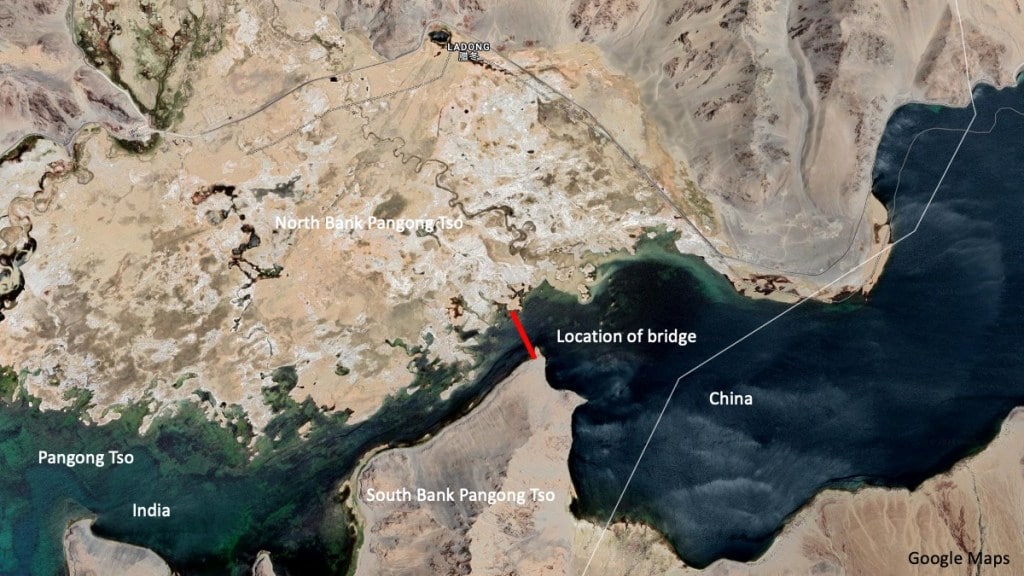China has completed the construction of a 400-meter bridge near the Line of Actual Control (LAC) in eastern Ladakh. Recent satellite images, exclusive to NDTV, from July 22 reveal that the bridge is now black-topped and in use by light motor vehicles.
Situated in territory held by China since 1958, the bridge is strategically located near the Line of Actual Control (LAC) between India and China in Ladakh. It facilitates the rapid movement of Chinese troops between the North and South banks of Pangong Lake.
“The new bridge over Pangong Lake grants Chinese forces a direct, shorter route for rapid troop deployment,” Damien Symon, a satellite imagery expert and researcher with The Intel Lab told NDTV’s Vishnu Som. “Previously, the People’s Liberation Army had to navigate the lake’s entire eastern section to reach conflict zones, a lengthy detour that hampered their response time in an active conflict zone,” he added.
Bridge to reduce travel distance by 50-100 kms
The bridge is expected to reduce the travel distance between the lake’s banks by approximately 50-100 kilometers, significantly cutting travel time.
In response to the development, the External Affairs Ministry referred to a prior statement: “This bridge is being constructed in areas that have been under illegal occupation by China for about 60 years. India has never recognised this illegal occupation.”
Bridge improves connectivity
Satellite images also show road access linking the new bridge to the existing road network on the North bank of Pangong, which leads to Khurnak Fort, an ancient Tibetan structure seized by China in July 1958. On the South bank, a new road connects the bridge to Rutog, a Chinese garrison town and munitions hub.
Symon explains that the bridge improves connectivity between China’s forward and depth forces, underscoring China’s commitment to consolidating its territorial claims by altering the landscape to its advantage.
Tension between India and China
Following violent skirmishes along the LAC in Eastern Ladakh beginning in May 2020, which included the Galwan Valley clash where 20 Indian soldiers were killed and China reported four fatalities (though some sources suggest closer to 40), India and China have worked to ease tensions.
The two countries agreed to create a demilitarized zone around the Pangong Lake, with China removing several structures between “Finger 4” and “Finger 8,” key geographical markers.
In response to the ongoing tensions, India has accelerated infrastructure development in Ladakh, including the construction of tunnels for all-season access.
In 2021, 87 bridges were built in the region, and in 2022, the Indian government allocated over Rs 2,000 crore for infrastructure projects along the frontier with China, with 18 key projects earmarked for Ladakh.

